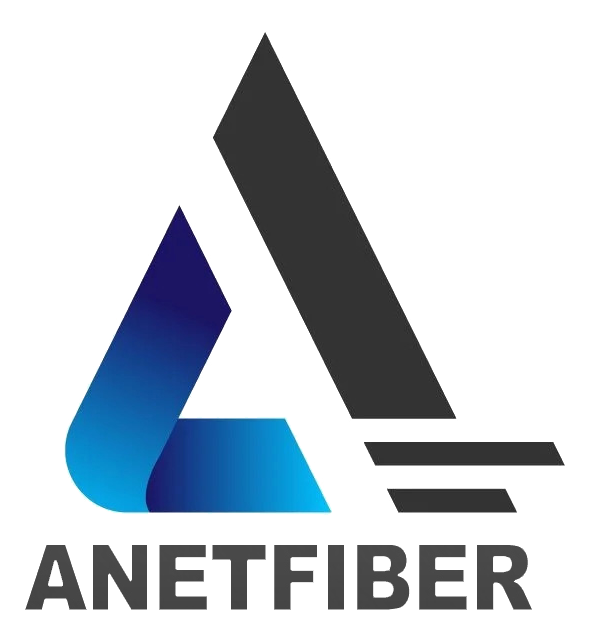How to Implement Fiber Optic Solutions in Your Industry: A Comprehensive Case Study

Understanding Fiber Optic Solutions and Their Importance
Fiber optic solutions have revolutionized the way industries manage their network infrastructure, offering unparalleled speed, reliability, and cost-effectiveness. In this section, we will delve into the basics of fiber optic technology and explore why industries are increasingly making the switch to Fiber Optic solutions.
What Are Fiber Optic Solutions?
Basics of Fiber Optic Technology
Fiber optic technology involves the transmission of data through thin, transparent fibers made of glass or plastic. These fibers use light pulses to carry information over long distances with minimal signal loss. The core components include a transmitter, a cable containing the optical fibers, and a receiver.
Advantages Over Traditional Cabling
Compared to traditional copper cabling, Fiber Optic solutions offer several distinct advantages. They can transmit data at significantly higher speeds over longer distances without succumbing to electromagnetic interference. Additionally, fiber optics are immune to environmental factors such as temperature fluctuations and moisture, making them highly reliable in various industrial settings.
Why Industries Are Switching to Fiber Optics
Improved Network Performance
Industries are turning to Fiber Optic solutions due to their ability to enhance network performance. With greater bandwidth capacity and faster data transfer rates, fiber optics enable seamless communication and support for advanced technologies like cloud computing and real-time analytics.
Long-Term Cost Benefits
Another compelling reason for the industry's shift towards fiber optics is the long-term cost benefits they offer. While the initial investment may be higher than traditional cabling methods, Fiber Optic solutions require less maintenance and have a longer lifespan, resulting in substantial cost savings over time.
Planning and Implementing Fiber Optic Solutions: A Step-by-Step Guide
After understanding the significance of fiber optic solutions, it is crucial for industries to effectively plan and implement these advanced technologies. This section will provide a comprehensive step-by-step guide on how to assess industry needs, design a fiber optic network, and execute the implementation process.
Assessing Your Industry's Needs
Conducting a Needs Analysis
Before embarking on the implementation of Fiber Optic solutions, it is essential to conduct a thorough needs analysis. This involves evaluating the current network infrastructure, identifying pain points, and determining the specific areas where fiber optics can bring about significant improvements. By understanding the existing challenges, industries can tailor their approach to ensure that the implementation aligns with their unique requirements.
Setting Clear Objectives
Once the needs analysis is complete, setting clear objectives becomes paramount. Industries should define specific goals they aim to achieve through implementing Fiber Optic solutions. Whether it's enhancing network speed, improving data security, or enabling scalability for future growth, establishing clear objectives provides a roadmap for a successful implementation strategy.
Designing Your Fiber Optic Network
Choosing the Right Fiber Optic Cables
Selecting the appropriate fiber optic cables is a critical decision in designing an efficient network infrastructure. Factors such as transmission distance, bandwidth requirements, and environmental conditions must be considered when choosing between single-mode and multi-mode cables. Understanding these factors ensures that the selected cables align with the industry's communication needs while allowing for future expansion.
Mapping Out the Network Layout
The next step in designing a fiber optic network involves mapping out the network layout. This includes determining optimal cable routes, identifying connection points, and planning for potential expansion. By creating a detailed network layout, industries can visualize how Fiber Optic solutions will integrate into their existing infrastructure and ensure seamless connectivity across different operational areas.
The Implementation Process
Site Surveys and Preparation
Prior to laying down fiber optic cables, conducting site surveys is essential to assess environmental factors that may impact installation. Factors such as building layouts, potential obstacles, and safety considerations need to be thoroughly evaluated. Adequate preparation based on these surveys ensures smooth execution during the installation phase.
Laying the Cables and Testing
The final stage of implementing Fiber Optic solutions involves laying down cables according to the planned network layout. Once installed, rigorous testing procedures are carried out to validate connectivity, signal strength, and data transmission capabilities. Thorough testing guarantees that the implemented fiber optic network meets performance standards before being fully integrated into daily operations.
Case Study: How Fiber Optics Improved Network Performance in the Manufacturing Industry
In examining the impact of fiber optic solutions on network performance within the manufacturing industry, it is essential to understand the background and objectives that prompted the adoption of this advanced technology.
Background and Objectives
The Company's Initial Challenges
The manufacturing company, a leading producer of precision engineering components, faced significant challenges with their existing network infrastructure. Their conventional cabling system struggled to support the increasing demand for real-time data transmission, leading to frequent disruptions in production processes and communication bottlenecks between different operational units. These challenges hindered operational efficiency and posed a threat to meeting stringent production timelines.
Goals for Implementing Fiber Optics
Recognizing the critical need to address these challenges, the company set clear objectives for implementing Fiber Optic solutions. Their primary goals included enhancing network reliability, reducing latency in data transfer, and establishing a robust foundation for integrating advanced automation technologies into their manufacturing processes. By leveraging fiber optics, they aimed to create a future-ready network infrastructure capable of supporting their evolving operational requirements while ensuring seamless connectivity across diverse production facilities.
The Implementation Journey
Planning and Design Phase
The implementation journey commenced with an extensive planning and design phase, where meticulous attention was given to understanding the specific network requirements of each production unit. Detailed assessments were conducted to identify optimal locations for deploying fiber optic cables, taking into account factors such as distance, potential electromagnetic interference, and scalability for future expansion. This phase also involved collaborating with experienced network architects and fiber optic specialists to develop a comprehensive blueprint that aligned with the company's long-term strategic objectives.
Execution and Results
Following the meticulous planning phase, the execution of Fiber Optic deployment began with precision and efficiency. Highly skilled technicians worked diligently to install the fiber optic cables according to the predefined network layout. Rigorous testing procedures were implemented at every stage of installation to ensure seamless connectivity and optimal signal strength across all communication channels. As a result of this meticulous approach, the company successfully transitioned from its legacy cabling system to a state-of-the-art fiber optic network without any disruption to ongoing operations.
Lessons Learned and Benefits Realized
Key Improvements in Network Performance
The adoption of fiber optics yielded remarkable improvements in network performance within the manufacturing environment. Latency in data transmission was significantly reduced, enabling real-time monitoring of production processes and swift exchange of critical information between different departments. This enhanced connectivity facilitated smoother coordination among various operational units, leading to streamlined workflows and improved overall productivity.
Other Notable Advantages
In addition to enhancing network performance, several other notable advantages were realized through the implementation of Fiber Optic solutions. These included heightened data security through advanced encryption capabilities inherent in fiber optics, greater resistance to electromagnetic interference resulting in minimal downtime due to signal disruptions, and future scalability that allowed for seamless integration of emerging technologies such as Internet of Things (IoT) devices within their manufacturing ecosystem.
Expanding Fiber Optic Solutions Across Different Industries
As the demand for high-speed, reliable data transmission continues to grow, Fiber Optic solutions are finding widespread applications across diverse sectors. Let's explore how fiber optics are being leveraged in healthcare, education, and environmental monitoring to address unique industry-specific challenges and drive innovation.
Fiber Optics in Healthcare
In the healthcare sector, the integration of Fiber Optic solutions has significantly transformed patient care and data management processes. Hospitals and medical facilities rely on robust network infrastructures to support critical operations such as electronic health records (EHR), telemedicine consultations, and real-time diagnostic imaging. By implementing fiber optics, healthcare institutions can ensure seamless connectivity for transmitting large volumes of medical data with minimal latency. This enables healthcare professionals to access vital patient information promptly, leading to more efficient decision-making and improved treatment outcomes. Moreover, the high bandwidth capabilities of fiber optics facilitate the adoption of advanced telehealth services, enabling remote patient monitoring and consultations that enhance accessibility to quality healthcare services.
Enhancing Patient Care and Data Management
Facilitating real-time access to electronic health records (EHR) through high-speed data transmission.
Supporting telemedicine initiatives by enabling seamless video consultations with patients located in remote areas.
Enhancing diagnostic imaging processes by ensuring rapid transfer of large image files for accurate medical assessments.
Fiber Optics in Education
The education sector has embraced Fiber Optic solutions as a catalyst for advancing remote learning initiatives and digital resource management within academic institutions. With the increasing reliance on online learning platforms and interactive digital resources, educational organizations require robust network infrastructures capable of handling substantial data traffic while maintaining consistent connectivity. Fiber optic networks offer the necessary bandwidth capacity to support multimedia-rich content delivery, live streaming of lectures, and collaborative virtual classrooms without compromising performance or reliability. Additionally, these solutions empower educators to seamlessly integrate emerging technologies such as virtual reality (VR) and augmented reality (AR) into their teaching methodologies, creating immersive learning experiences for students.
Supporting Remote Learning and Digital Resources
Enabling seamless live streaming of educational lectures and interactive sessions without latency issues.
Facilitating the integration of virtual reality (VR) tools for immersive learning experiences that engage students effectively.
Providing a robust foundation for managing extensive digital libraries and online educational resources with high-speed data transfer capabilities.
Fiber Optics in Environmental Monitoring
In environmental monitoring endeavors such as tracking sea ice dynamics and climate change patterns, Fiber Optic solutions play a pivotal role in gathering real-time sensor data from remote locations with unparalleled precision. The deployment of fiber optic sensing systems enables researchers to monitor environmental parameters such as temperature variations, seismic activities, and oceanographic conditions with exceptional accuracy over extended periods. This valuable data contributes to comprehensive climate studies, facilitates early detection of environmental anomalies, and supports informed decision-making for sustainable resource management.
Tracking Sea Ice and Climate Change
Gathering precise temperature measurements from remote Arctic regions using fiber optic sensing technologies.
Monitoring seismic activities along tectonic plate boundaries through distributed fiber optic sensor networks.
Contributing to climate change research by capturing detailed oceanographic data through advanced fiber optic monitoring systems.
Key Takeaways and Future Outlook
As industries continue to embrace Fiber Optic solutions, it becomes imperative to recap the substantial benefits they offer and explore the exciting prospects that lie ahead in the realm of fiber optics.
Recap of Fiber Optic Benefits
The adoption of Fiber Optic solutions presents a compelling case for why it's worth the investment. The unparalleled speed and reliability of fiber optics empower industries to establish robust network infrastructures capable of meeting escalating data demands. By leveraging fiber optics, businesses can achieve seamless communication, enhanced security, and future scalability, thereby ensuring a sustainable foundation for their evolving technological needs.
Looking Ahead: The Future of Fiber Optics in Industry
As technology continues to advance at a rapid pace, the future of fiber optics in industry holds tremendous promise. Technological advancements in fiber optic materials and transmission techniques are poised to further elevate the capabilities of Fiber Optic solutions. Moreover, new applications such as integrated photonics and quantum communication are on the horizon, presenting unprecedented opportunities for industries to harness the full potential of fiber optics in driving innovation and addressing complex connectivity challenges.


